Clay sculpting calms anxious minds through its tactile nature and mindfulness-promoting qualities. As you mold the clay, you engage multiple senses, grounding yourself in the present moment. The repetitive motions of kneading and shaping create a meditative state, reducing stress and releasing tension. Clay work allows for emotional expression, providing a tangible outlet for your feelings. It gives you a sense of control and accomplishment as you transform a shapeless lump into a meaningful form. The process can be both therapeutic and social, offering opportunities for personal growth and connection. Exploring this creative practice may reveal even more benefits for your mental well-being.
The Tactile Nature of Clay

Clay's malleable texture invites your hands to explore and create. As you sink your fingers into the soft, pliable material, you'll feel an immediate connection to its tactile nature. The coolness of the clay against your skin provides a grounding sensation, drawing your focus away from anxious thoughts and into the present moment.
You'll notice how the clay responds to your touch, molding and shaping with each movement of your hands. This responsiveness creates a powerful sense of control, allowing you to manipulate your environment in a tangible way. The physical act of kneading, pressing, and smoothing the clay engages your senses, promoting a state of mindfulness.
The tactile experience of working with clay stimulates nerve endings in your fingertips, sending calming signals to your brain. This sensory input can help reduce stress hormones and promote relaxation.
As you continue to work with the clay, you may find yourself entering a flow state, where time seems to slow down and your worries fade into the background. The physical connection to the material provides a unique outlet for self-expression, allowing you to externalize your emotions in a safe, non-verbal way.
Mindfulness Through Sculpting
Sculpting with clay offers a unique pathway to mindfulness, allowing you to focus intently on the present moment. As you work the clay with your hands, you'll find your mind naturally shifting away from anxious thoughts and onto the task at hand. This process encourages a state of flow, where you're fully immersed in the creative act.
The mindfulness benefits of clay sculpting are numerous:
- Sensory engagement: You're using multiple senses – touch, sight, and even smell – which helps ground you in the present.
- Rhythmic movements: The repetitive actions of kneading, rolling, and shaping clay can be meditative, calming your mind.
- Focused attention: Concentrating on the details of your sculpture keeps your mind from wandering to worries or stressors.
As you sculpt, you'll notice your breathing naturally slowing and becoming more regular. You're not just creating art; you're practicing mindfulness.
The act of transforming a formless lump of clay into a defined shape mirrors the process of bringing clarity to your thoughts. It's a tangible representation of your ability to shape your mental state, offering a sense of control that can be particularly soothing for anxious minds.
Creative Expression and Emotions

Many people find that creative expression through clay sculpting offers a powerful outlet for processing emotions. As you work with clay, you're able to give tangible form to your feelings, whether they're positive or negative. This physical representation can help you externalize and better understand your emotional state.
When you're anxious, you might feel overwhelmed by abstract worries. Clay sculpting allows you to channel these anxieties into a concrete object, making them feel more manageable. You can mold, reshape, or even destroy your creation, mirroring the way you'd like to handle your emotions.
The act of creating also stimulates the release of dopamine, a neurotransmitter associated with pleasure and reward. This can help counteract the stress and anxiety you're experiencing. Additionally, as you focus on your artwork, you're engaging in a form of active meditation, which can further reduce anxiety.
Clay sculpting doesn't require artistic skill to be therapeutic. The process itself is what matters. You're free to experiment, make mistakes, and learn from them, fostering a sense of control and accomplishment that can boost your self-esteem and emotional resilience.
Stress Relief in Shaping
The physical act of shaping clay can be incredibly soothing for your nervous system. As you knead, mold, and sculpt the pliable material, you'll find your muscles relaxing and your mind focusing on the tactile sensations. This engagement of your senses helps redirect your attention away from anxious thoughts, allowing you to enter a state of flow.
Clay sculpting offers several stress-relieving benefits:
- Repetitive motions: The rhythmic actions of working with clay can induce a meditative state, calming your mind and reducing stress hormones.
- Sensory stimulation: The cool, smooth texture of clay provides grounding sensory input, helping you stay present in the moment.
- Controlled pressure release: Squeezing and manipulating clay allows you to physically release tension in a controlled, constructive manner.
As you shape the clay, you're also shaping your emotional state. The malleability of the material mirrors your own capacity for change and adaptation.
You'll find that the process of transforming a formless lump into a defined shape can be metaphorically empowering, reinforcing your ability to mold your own experiences and overcome anxiety.
Focusing on the Present Moment
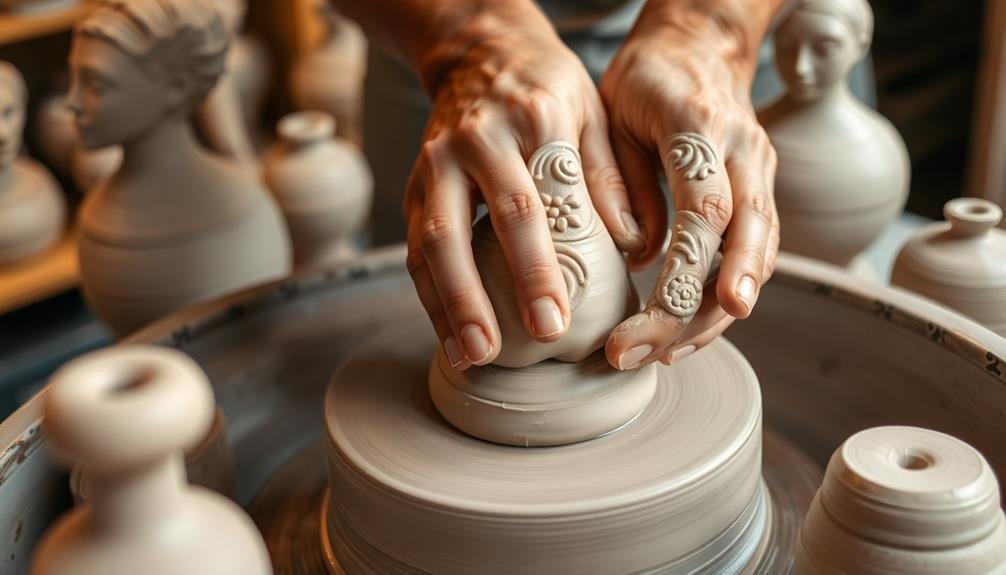
As you mold the clay with your hands, you're immediately drawn into the present moment.
The tactile sensations of the cool, pliable material against your skin engage your senses fully.
This sensory focus helps quiet your mental chatter, allowing you to concentrate solely on the clay and your creative process.
Tactile Sensations Engage Senses
Through the process of clay sculpting, your hands become intimately connected with the material, engaging multiple senses at once. As you manipulate the clay, you'll notice its cool, smooth texture against your skin. The earthy scent fills your nostrils, grounding you in the present moment.
You'll hear the subtle sounds of clay being molded and shaped, creating a sensory-rich experience that captivates your attention.
This multi-sensory engagement offers several benefits for anxiety relief:
- Tactile stimulation: The physical contact with clay activates nerve endings in your fingertips, promoting relaxation and reducing stress.
- Proprioceptive feedback: As you work the clay, your brain receives constant information about your body's position and movement, enhancing body awareness.
- Sensory distraction: The focus on tactile sensations can help redirect your mind from anxious thoughts, providing a mental break.
Silencing Mental Chatter
By focusing intently on the clay in your hands, you'll find your mind naturally quieting down. As you mold and shape the material, your thoughts shift from internal worries to the present moment. This redirection of attention helps silence the constant mental chatter that often accompanies anxiety.
When you're fully engaged in sculpting, your brain doesn't have the capacity to dwell on future concerns or past regrets. You're forced to concentrate on the tactile sensations, the visual changes in the clay, and the creative decisions you're making in real-time. This state of mindfulness can be incredibly calming and therapeutic.
Clay sculpting also provides a sense of control that anxiety often strips away. As you manipulate the clay, you're making choices and seeing immediate results. This process can help you feel more grounded and centered, reducing the feeling of being overwhelmed by anxious thoughts.
Moreover, the rhythmic motions of kneading, rolling, and shaping clay can induce a meditative state, further quieting your mind and promoting relaxation.
You'll likely find that, with practice, sculpting becomes an effective tool for managing anxiety and achieving mental clarity.
Clay as a Grounding Tool
Clay offers a tangible connection to the present moment, making it an excellent grounding tool for those struggling with anxiety. As you work with clay, you're forced to focus on the physical sensations and immediate tasks at hand, drawing your attention away from anxious thoughts.
The tactile nature of clay engages your senses, helping you stay anchored in the present.
When you're feeling overwhelmed, try these grounding techniques with clay:
- Knead the clay: Feel its texture and temperature change as you work it with your hands.
- Create simple shapes: Focus on forming basic geometric forms, paying attention to the details.
- Imprint textures: Press various objects into the clay, observing the patterns they create.
Releasing Tension Through Kneading

The act of kneading clay can be a powerful stress-reliever, allowing you to channel your anxiety into physical action. As you work the clay with your hands, you're engaging in a repetitive, rhythmic motion that helps release tension from your body. This process can be meditative, drawing your focus away from anxious thoughts and into the present moment.
When you knead clay, you're not just manipulating the material; you're also working out your own stress. The pressure you apply to the clay can mirror the internal pressure you feel, giving you a tangible way to express and release it. You'll notice your muscles relaxing as you continue to work the clay, and your breathing may become more regulated.
| Action | Sensation |
|---|---|
| Squeezing | Tension release |
| Rolling | Muscle relaxation |
| Flattening | Stress dissipation |
| Folding | Anxiety reduction |
| Smoothing | Mental calming |
As you engage in these actions, you're creating a physical outlet for your emotional state. The malleability of clay allows you to shape and reshape it, mirroring the process of transforming your anxious energy into something more manageable. This tactile experience can help ground you and provide a sense of control over your environment and emotions.
Sense of Control and Accomplishment
Working with clay gives you the power to master a malleable medium, offering a unique sense of control over your environment.
As you shape and mold the clay, you'll witness tangible progress in real-time, creating a visual representation of your efforts.
This ability to see your work take form can boost your confidence and provide a sense of accomplishment, helping to alleviate anxiety through concrete achievements.
Mastering Malleable Medium
Mastering a malleable medium like clay offers a unique sense of control and accomplishment. As you shape and mold the clay, you're actively engaging with a material that responds to your touch. This tactile experience allows you to exert control over your environment, even if it's just within the confines of your sculpture.
The malleability of clay provides endless opportunities for creativity and problem-solving. You can:
- Experiment with different techniques
- Correct mistakes easily
- Adapt your design as you work
This flexibility fosters a sense of freedom and reduces the pressure to create a perfect piece from the start. As you become more skilled, you'll notice improvements in your work, boosting your confidence and sense of achievement.
The process of mastering clay sculpting also teaches patience and persistence. You'll learn to work through challenges, developing resilience that can translate to other areas of your life.
The tangible results of your efforts serve as a physical reminder of your progress, reinforcing the idea that you can overcome obstacles and achieve your goals.
Tangible Progress Visualization
How can clay sculpting provide a tangible visualization of your progress? As you mold and shape the clay, you're creating a physical representation of your thoughts and emotions. This process allows you to see your ideas take form, giving you a concrete sense of accomplishment.
When you're anxious, it's easy to feel overwhelmed and stuck. Clay sculpting offers a way to break through these mental barriers. You'll start with a shapeless lump and gradually transform it into something meaningful. This transformation mirrors your own journey towards calm and control.
Each step in your sculpting process becomes a measurable marker of progress. You'll see your creation evolve from rough outlines to refined details. This visual feedback reinforces your ability to effect change, boosting your confidence and reducing anxiety.
The tangible nature of clay also allows you to make adjustments easily. If you're not satisfied with a part of your sculpture, you can reshape it. This flexibility teaches you that setbacks aren't permanent and that you have the power to adapt and improve.
Therapeutic Benefits of Clay Work

Through the tactile experience of molding clay, individuals can access a myriad of therapeutic benefits. As you work with the material, you'll find that it engages your senses and redirects your focus away from anxious thoughts. The physical act of kneading, shaping, and manipulating clay can be incredibly soothing, helping to release tension and promote relaxation.
Clay work also offers a unique opportunity for self-expression and emotional release. You can channel your feelings into the clay, creating shapes and forms that represent your inner state. This process can be cathartic, allowing you to externalize and process complex emotions without the need for words.
Moreover, clay sculpting can boost your self-esteem and sense of accomplishment. As you develop your skills, you'll likely experience:
- Increased confidence in your creative abilities
- A stronger sense of personal identity
- Enhanced problem-solving skills
The act of creating something tangible with your own hands can be empowering, reminding you of your capability to shape not only clay but also your own life experiences. This newfound sense of control can greatly contribute to reducing anxiety and improving overall mental well-being.
Calming Repetitive Motions
As you work with clay, you'll find the rhythmic kneading motion naturally soothes your nerves.
This repetitive action allows you to focus on the tactile sensations, drawing your attention away from anxious thoughts.
Rhythmic Kneading Soothes Nerves
The repetitive motion of kneading clay can have a profoundly calming effect on your nerves. As you work the clay with your hands, you'll find yourself falling into a soothing rhythm. This rhythmic kneading engages your tactile senses and helps redirect your focus away from anxious thoughts.
When you're feeling overwhelmed, try this simple clay-kneading exercise:
- Start with a softball-sized piece of clay
- Press the clay firmly between your palms
- Roll and squeeze it into different shapes
As you continue this process, you'll notice your breathing naturally slowing down and your muscles relaxing. The consistent pressure and movement of your hands create a meditative state, allowing your mind to settle.
You don't need to create a masterpiece; the act of kneading itself is therapeutic. The malleability of clay provides immediate feedback to your touch, grounding you in the present moment.
This tactile experience can help interrupt the cycle of anxious thoughts, giving your mind a much-needed break. By focusing on the sensation of clay in your hands, you're practicing a form of mindfulness that can greatly reduce stress and anxiety.
Focusing on Tactile Sensations
Moving beyond simple kneading, clay sculpting offers a rich array of tactile sensations that can further calm your anxious mind. As you work with the clay, you'll experience a variety of textures and consistencies. You might start with a firm block, feeling its cool, smooth surface against your palms. As you manipulate the material, it warms and softens, becoming more pliable under your touch.
Focus on the sensations as you pinch, roll, and shape the clay. Notice how it responds to different pressures and movements. The repetitive motions of smoothing surfaces, creating coils, or forming spheres can become meditative, drawing your attention away from anxious thoughts. You'll find yourself absorbed in the present moment, fully engaged with the tactile experience.
Experiment with various tools to create different textures. Run your fingers over ridges made by a wire tool, or feel the soft impressions left by a wooden stick. These diverse sensory inputs can help ground you, providing a concrete focal point for your mind and hands.
Engaging Multiple Senses

Clay sculpting engages multiple senses, making it an ideal activity for reducing anxiety. As you work with the clay, you're not just using your sense of touch; you're also activating your visual and olfactory senses. This multi-sensory experience can help ground you in the present moment, distracting your mind from anxious thoughts.
When you sculpt, you'll notice:
- The earthy scent of the clay, which can be calming and reminiscent of nature
- The visual changes as you mold the clay into different shapes and forms
- The sound of your hands working the material, creating a rhythmic and soothing effect
The combination of these sensory inputs creates a rich, immersive experience that can help reduce stress and anxiety. As you focus on the clay's texture, color, and smell, you're less likely to dwell on worries or negative thoughts.
This sensory engagement also promotes mindfulness, as you become fully aware of your immediate surroundings and actions. By involving multiple senses, clay sculpting offers a more thorough approach to anxiety relief than activities that focus on just one sense.
Metaphorical Transformation of Feelings
Through clay sculpting, you can metaphorically transform your feelings into tangible objects. As you mold the clay, you're not just shaping a physical form; you're giving shape to your emotions. This process allows you to externalize your internal struggles, making them easier to confront and understand.
When you're anxious, you might sculpt a tight, constricted shape representing your tension. As you work with the clay, you can gradually transform it into a more open, relaxed form. This physical act mirrors the emotional transformation you're seeking. You're literally reshaping your anxiety into something more manageable.
You can also create symbols of your fears or worries, then alter or destroy them. This act can be incredibly cathartic, providing a sense of control over your emotions. Alternatively, you might sculpt representations of calm, strength, or resilience, reinforcing positive feelings.
The beauty of this metaphorical work is its flexibility. There's no right or wrong way to represent your emotions. The process itself, of giving tangible form to abstract feelings, can provide profound insights and relief from anxiety.
Social Connections in Clay Classes

In addition to its therapeutic benefits, clay sculpting classes offer valuable opportunities for social connection.
You'll find yourself surrounded by like-minded individuals who share your interest in creativity and self-expression. These classes provide a supportive environment where you can interact with others while focusing on your art, reducing social anxiety in a natural, low-pressure setting.
As you attend clay classes regularly, you'll likely experience:
- Improved communication skills through sharing ideas and techniques
- Enhanced empathy by appreciating others' artistic perspectives
- Increased sense of belonging within a creative community
You'll discover that working alongside others can inspire new ideas and approaches to your own projects.
The collaborative atmosphere encourages you to step out of your comfort zone and try new techniques. You might even form lasting friendships with fellow clay enthusiasts, extending your social network beyond the classroom.
Frequently Asked Questions
Is Clay Sculpting Suitable for Children With Anxiety Disorders?
Yes, clay sculpting is suitable for children with anxiety disorders. You'll find it's a calming, tactile activity that can help them focus and express themselves. It's non-threatening, allows for creativity, and can boost their confidence through hands-on accomplishments.
How Long Should a Clay Sculpting Session Last for Maximum Benefits?
You'll find that 30-60 minutes is ideal for a clay sculpting session. It's long enough to immerse yourself but not so long that you'll fatigue. Listen to your body and stop when you're feeling relaxed and satisfied.
Can Clay Sculpting Help With Specific Phobias or Only General Anxiety?
Clay sculpting can help with both specific phobias and general anxiety. You'll find it's effective for various anxiety types. As you focus on molding clay, you're distracted from your fears and can gradually reduce anxiety symptoms.
Are There Any Risks or Contraindications for Using Clay Therapy?
You'll find clay therapy generally safe, but there are a few risks to contemplate. You might experience skin irritation or allergic reactions. If you've got respiratory issues, clay dust could be problematic. Always follow proper hygiene practices.
How Does Clay Sculpting Compare to Other Art Therapies for Anxiety Relief?
You'll find clay sculpting offers unique tactile benefits compared to other art therapies. It's more hands-on than painting or drawing, allowing you to physically manipulate your emotions. It's also less structured than coloring, providing greater creative freedom.
In Summary
You've discovered a powerful tool for calming your anxious mind through clay sculpting. By engaging your senses, expressing emotions, and focusing on the present, you're creating a mindful escape from stress. As you shape and mold the clay, you're also reshaping your thoughts and feelings. Don't underestimate the therapeutic benefits of this tactile art form. Whether alone or in a class, clay sculpting offers a unique path to tranquility and self-discovery.
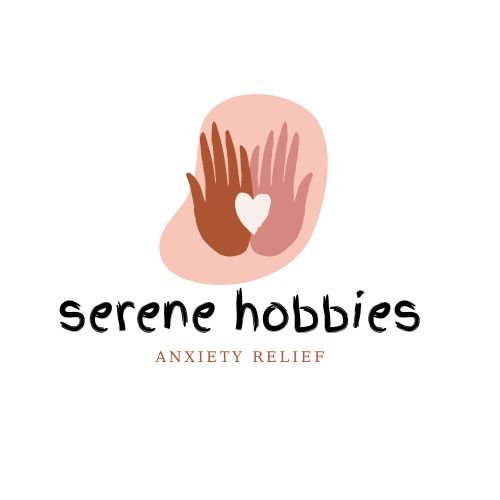
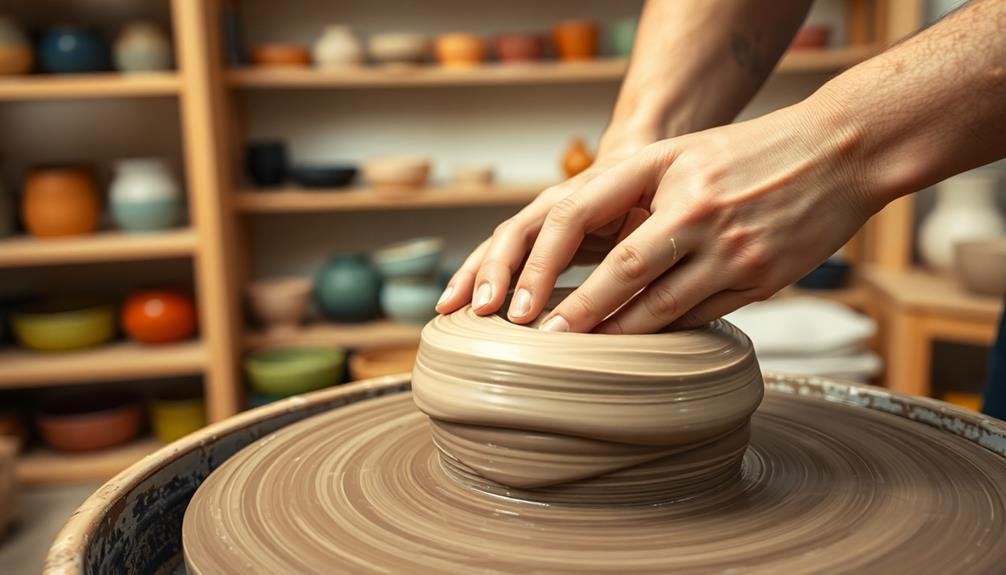
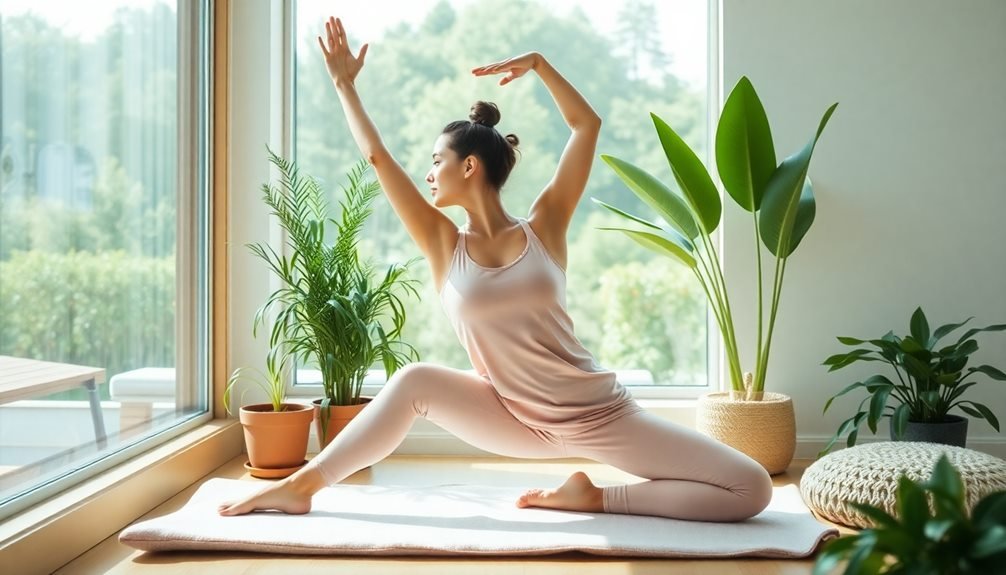
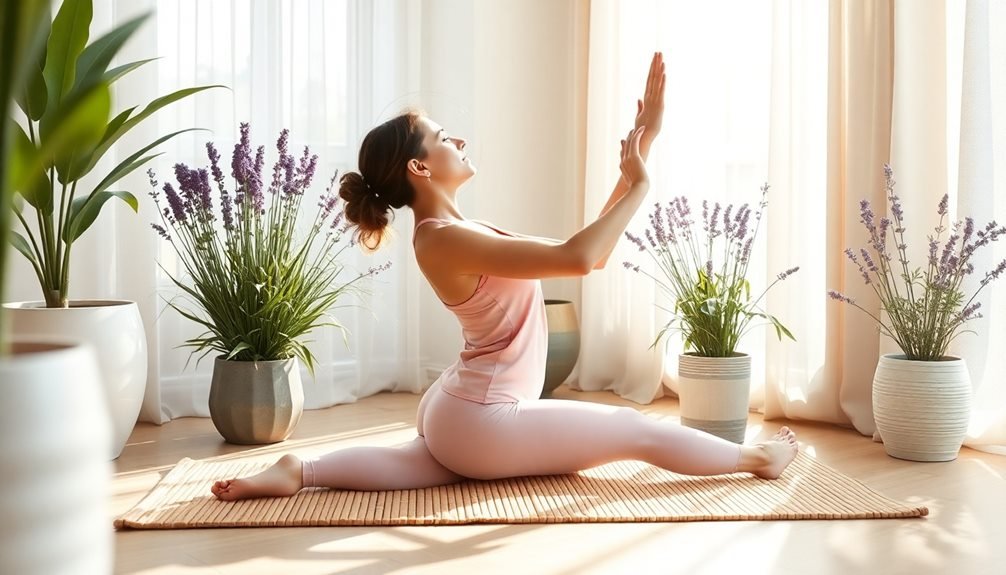
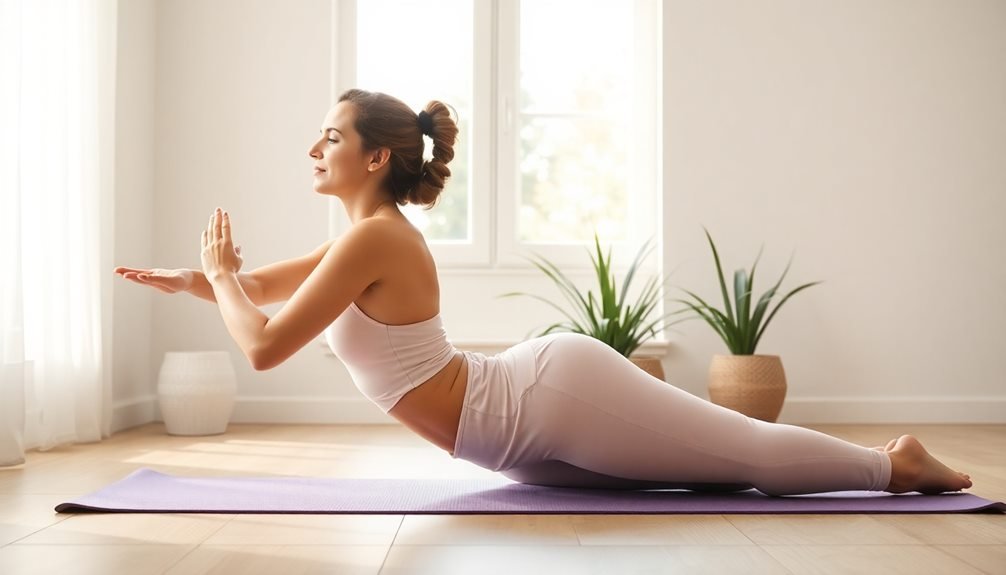
Leave a Reply